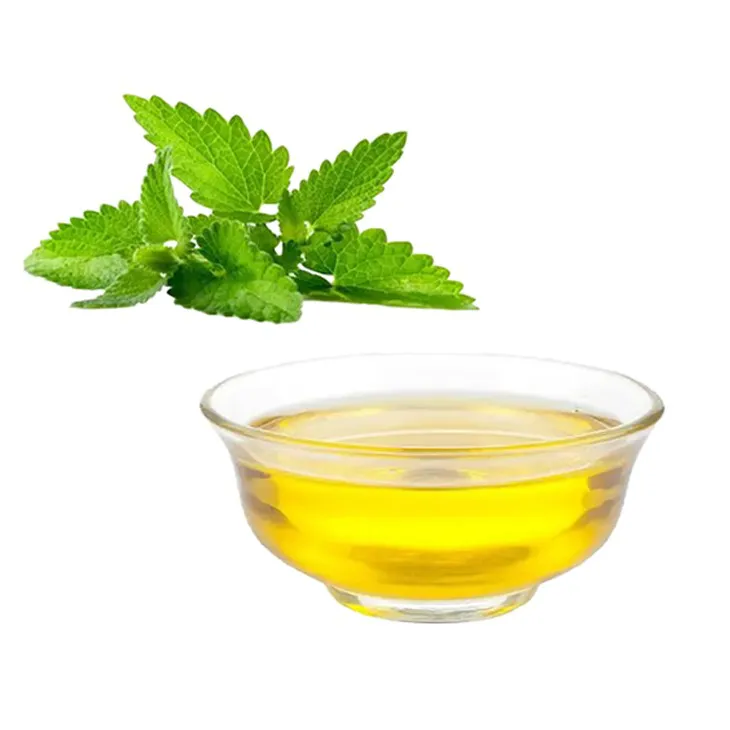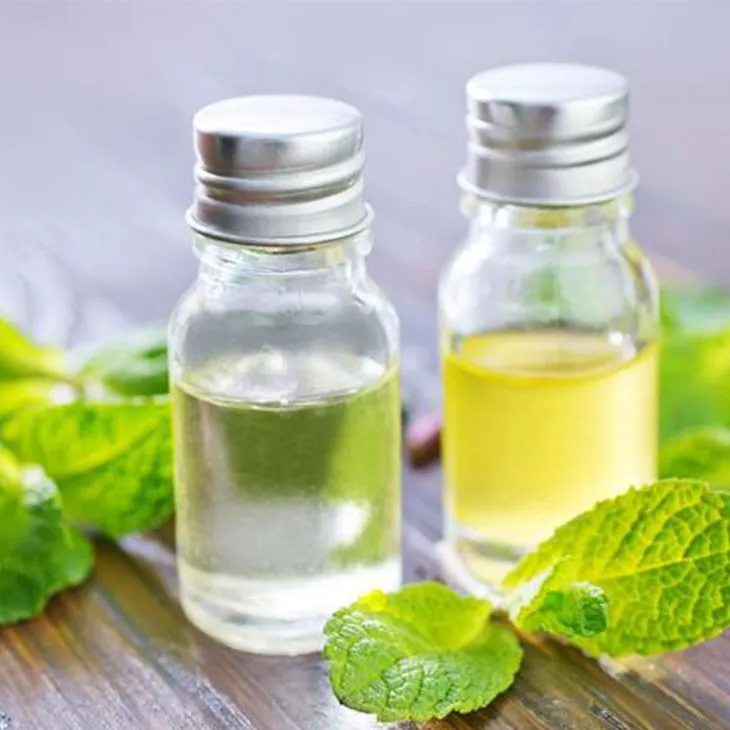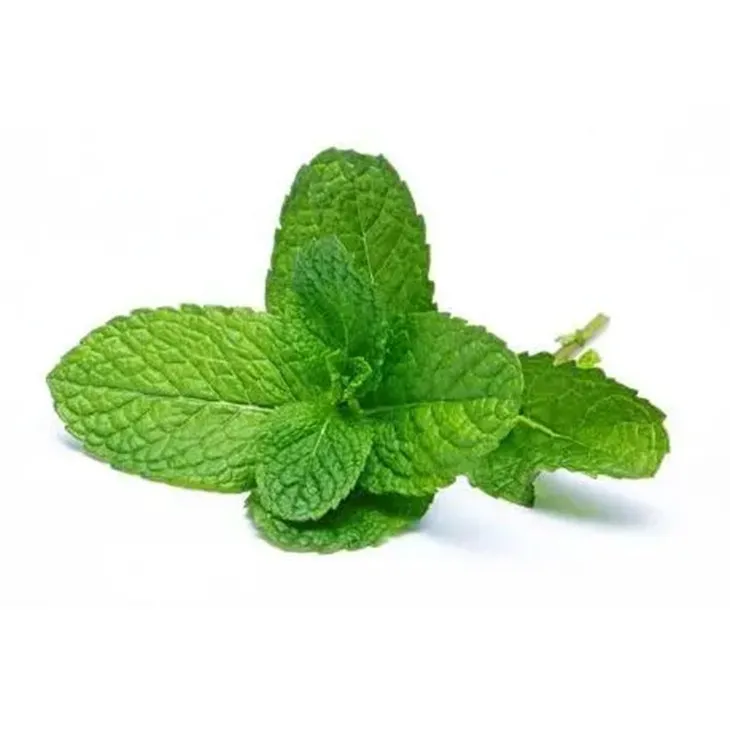- 0086-571-85302990
- sales@greenskybio.com
Scent of Mint: A Journey Through the Process of Peppermint Oil Extraction
2024-08-17

Introduction
Peppermint Oil has long been cherished for its refreshing scent and numerous beneficial properties. It is used in a wide range of products, from cosmetics to pharmaceuticals, and in aromatherapy. The extraction of Peppermint Oil is a fascinating process that involves a combination of traditional and modern methods, as well as considerations of environmental factors. This article will take you on a journey through the entire process, from the peppermint plant in the field to the final product in the bottle.

The Peppermint Plant
Peppermint is a hybrid plant, a cross between watermint and spearmint. It is a perennial herb that thrives in cool, moist environments. The plant has square stems and fragrant, lance - shaped leaves that are dark green with a purple tinge. The quality of Peppermint Oil is highly dependent on the health and growth conditions of the plant.
Growing Conditions
Peppermint plants require well - drained soil, plenty of sunlight, and regular watering. They are often grown in temperate regions around the world. The soil should be rich in organic matter to support the growth of the plant. In addition, proper spacing between plants is crucial to ensure good air circulation and prevent the spread of diseases.
Harvesting
Peppermint is typically harvested when it is in full bloom, which is usually in the summer months. The plants are cut close to the ground using specialized harvesting equipment or by hand. It is important to harvest at the right time to ensure maximum oil content. Harvesting too early or too late can result in lower quality oil.

Traditional Extraction Methods
Traditional methods of peppermint oil extraction have been used for centuries and are still practiced in some regions today.
Steam Distillation
Steam distillation is one of the most common traditional methods. In this process:
- The harvested peppermint is first chopped into small pieces.
- It is then placed in a distillation apparatus. A large vat or container is often used.
- Steam is passed through the plant material. The steam helps to release the essential oils from the peppermint.
- The steam - oil mixture then rises and is condensed back into a liquid form. This is typically done using a condenser, which cools the steam - oil mixture.
- The resulting liquid is a combination of water and peppermint oil. Since oil and water do not mix, the two can be separated using a separating funnel. The peppermint oil, being lighter, will float on top of the water and can be carefully siphoned off.
Hydro - distillation
Hydro - distillation is another traditional method. Here:
- The peppermint plant material is placed in water in a distillation vessel.
- The water is then heated to boiling point. As the water boils, the steam helps to carry the essential oils out of the plant material.
- The subsequent steps are similar to steam distillation, with the steam - oil mixture being condensed and the oil separated from the water.

Modern Extraction Methods
With the advancement of technology, modern extraction methods have emerged, offering several advantages over traditional techniques.
Supercritical Fluid Extraction
Supercritical fluid extraction (SFE) is a relatively new method. In SFE:
- Carbon dioxide (CO₂) is often used as the supercritical fluid. At certain pressure and temperature conditions, CO₂ reaches a supercritical state, having properties of both a gas and a liquid.
- The supercritical CO₂ is passed through the peppermint plant material. It has a high solvating power and can effectively extract the essential oil.
- One of the main advantages of SFE is that it is a more selective extraction method. It can target specific compounds in the peppermint oil, resulting in a higher - quality product. Also, it is a more environmentally friendly method as it does not use organic solvents, and CO₂ is a non - toxic and easily recyclable gas.
Solvent Extraction
Solvent extraction involves the use of organic solvents to extract peppermint oil. However:
- The solvents used, such as hexane or ethanol, need to be carefully selected. They must be food - grade solvents if the peppermint oil is intended for use in products that may come into contact with food or be ingested.
- After extraction, the solvent needs to be completely removed from the oil. This requires additional processing steps, such as evaporation or distillation. The main advantage of solvent extraction is that it can be a more efficient method for large - scale production, but it also has potential drawbacks in terms of solvent residues and environmental impact.

Environmental Factors in Peppermint Oil Extraction
Environmental factors play a significant role in the extraction of peppermint oil.
Water Usage
Both traditional steam and hydro - distillation methods require a significant amount of water. In regions where water is scarce, this can be a concern. Modern methods like supercritical fluid extraction, which do not rely on large amounts of water, can be more sustainable in such areas. However, proper water management in traditional extraction processes can also help reduce water waste. For example:
- Recycling the water used in hydro - distillation can be an effective way to conserve water.
- Using more efficient steam generation systems in steam distillation can reduce the overall water consumption.
Energy Consumption
All extraction methods require energy, whether it is to heat the water in distillation or to maintain the pressure and temperature in supercritical fluid extraction. The energy source used can have a significant impact on the environmental footprint of the extraction process. For instance:
- Using renewable energy sources, such as solar or wind power, to operate the extraction equipment can reduce the carbon emissions associated with peppermint oil extraction.
- Improving the insulation of distillation vessels and optimizing the extraction process can also reduce energy consumption.
Waste Management
During the extraction process, there is always some form of waste generated. In traditional distillation, the plant residue left after extraction can be composted and used as fertilizer. In solvent extraction, proper disposal of the solvent waste is crucial to prevent environmental pollution. Additionally:
- Finding ways to reuse or recycle the plant residue in other industries can further reduce waste.
- Using biodegradable solvents or developing more efficient solvent recovery systems can address the waste management issues associated with solvent extraction.
The Benefits of Peppermint Oil
Peppermint oil has a wide range of benefits, which is why it is so highly valued in various industries.
Medicinal Properties
Peppermint oil has been used in traditional medicine for centuries. It has:
- Antimicrobial properties. It can help fight against certain bacteria and fungi, making it useful in treating skin infections and oral health problems.
- Anti - inflammatory properties. It can reduce inflammation in the body, which may be beneficial for conditions such as arthritis or muscle pain.
- Digestive benefits. It can help relieve indigestion, bloating, and nausea. It is often used in herbal remedies for digestive disorders.
Cosmetic and Aromatherapy Applications
In the cosmetic industry, peppermint oil is used for its refreshing scent and skin - soothing properties. In aromatherapy:
- It is believed to have a calming effect on the mind, reducing stress and anxiety.
- It can also be used to improve mental focus and concentration, making it popular in products such as essential oil diffusers and scented candles.
Food and Beverage Industry
Peppermint oil is used as a flavoring agent in the food and beverage industry. It is commonly found in:
- Mint - flavored candies, such as peppermints and mint chocolates.
- Beverages like mint tea and some alcoholic drinks, where it adds a refreshing flavor.
Conclusion
The extraction of peppermint oil is a complex process that involves a combination of traditional and modern methods. Environmental factors need to be carefully considered to ensure sustainable production. The resulting peppermint oil has a wide range of benefits, making it a valuable commodity in many industries. As the demand for natural products continues to grow, further research and innovation in peppermint oil extraction are likely to occur, with the aim of improving quality, efficiency, and environmental sustainability.
FAQ:
What are the common extraction techniques for peppermint oil?
There are several common extraction techniques for peppermint oil. One is steam distillation, which involves passing steam through the peppermint plant material. The steam helps to release the volatile oil components, which are then condensed and collected. Another method is solvent extraction, where a suitable solvent is used to dissolve the oil from the plant. However, steam distillation is more widely used in the commercial production of peppermint oil as it is considered a more natural and pure method.
What are the traditional methods of peppermint oil extraction?
Traditionally, peppermint oil was often extracted using simple distillation setups. This involved boiling the peppermint plant in water and collecting the condensed vapors that contained the oil. These traditional methods were less efficient compared to modern techniques but were the foundation for the development of current extraction processes. Some traditional methods also involved pressing the peppermint leaves to extract a small amount of oil, although this yielded a relatively low quantity and quality of oil.
How do modern methods improve the extraction of peppermint oil?
Modern methods, such as advanced steam distillation systems, offer better control over the extraction process. They can precisely regulate the temperature, pressure, and steam flow rate, which results in a more efficient extraction of peppermint oil. Additionally, modern methods often use high - quality stainless - steel equipment that is easier to clean and maintain, reducing the risk of contamination. Some modern facilities also use automated processes that can handle large quantities of peppermint plants at once, increasing productivity.
What environmental factors affect peppermint oil extraction?
Several environmental factors play a role in peppermint oil extraction. The climate where the peppermint is grown is crucial. Peppermint thrives in a cool and moist environment, and if the climate is not suitable, the quality and quantity of the oil produced may be affected. Soil quality also matters. Well - drained, fertile soil can lead to healthier peppermint plants with a higher oil content. Additionally, altitude can have an impact. Higher altitudes may result in different chemical compositions of the peppermint oil due to differences in temperature, sunlight exposure, and air quality.
What are the benefits of peppermint oil?
Peppermint oil has multiple benefits. In the field of health, it has analgesic properties and can be used to relieve headaches and muscle pain when applied topically. It also has anti - inflammatory properties. In aromatherapy, peppermint oil is known for its refreshing and invigorating scent, which can help reduce stress and improve mental focus. In the cosmetic industry, it is used in products like shampoos and lotions due to its pleasant smell and potential to soothe the skin.
Related literature
- Peppermint Oil: Production, Composition, and Applications"
- "The Science Behind Peppermint Oil Extraction"
- "Environmental Impacts on Peppermint Cultivation and Oil Quality"
- ▶ Hesperidin
- ▶ Citrus Bioflavonoids
- ▶ Plant Extract
- ▶ lycopene
- ▶ Diosmin
- ▶ Grape seed extract
- ▶ Sea buckthorn Juice Powder
- ▶ Fruit Juice Powder
- ▶ Hops Extract
- ▶ Artichoke Extract
- ▶ Mushroom extract
- ▶ Astaxanthin
- ▶ Green Tea Extract
- ▶ Curcumin
- ▶ Horse Chestnut Extract
- ▶ Other Product
- ▶ Boswellia Serrata Extract
- ▶ Resveratrol
- ▶ Marigold Extract
- ▶ Grape Leaf Extract
- ▶ New Product
- ▶ Aminolevulinic acid
- ▶ Cranberry Extract
- ▶ Red Yeast Rice
- ▶ Red Wine Extract
-
Tinospora cordifolia extract
2024-08-17
-
Giant Knotweed Extract
2024-08-17
-
Citrus Aurantium Extract
2024-08-17
-
Thunder God Vine Extract
2024-08-17
-
Konjac Powder
2024-08-17
-
Alisma Extract
2024-08-17
-
Citrus Aurantii Extract
2024-08-17
-
Centella Asiatica Extract
2024-08-17
-
Eucommia Ulmoides Extract
2024-08-17
-
Feverfew Extract
2024-08-17





















